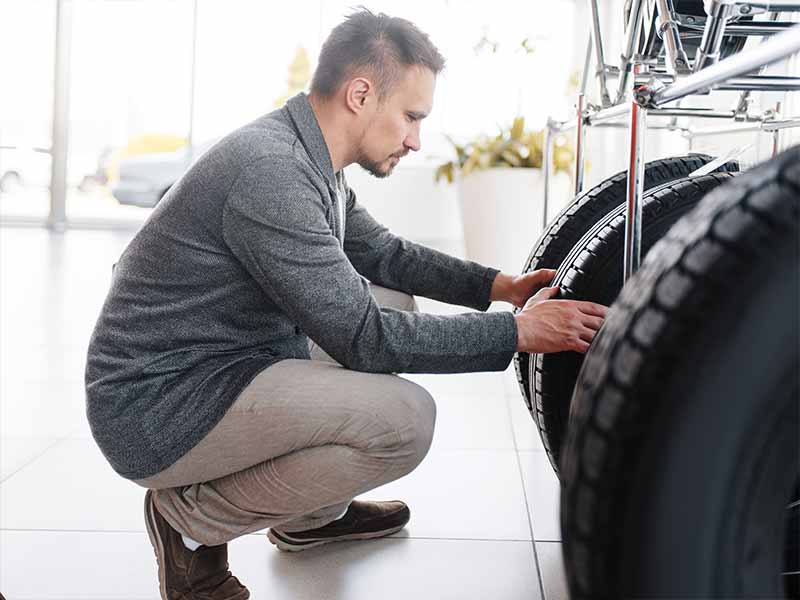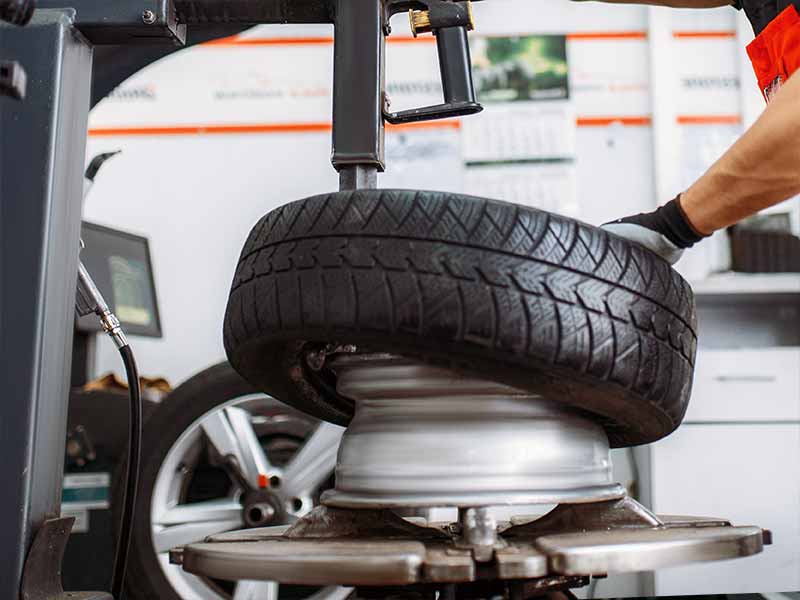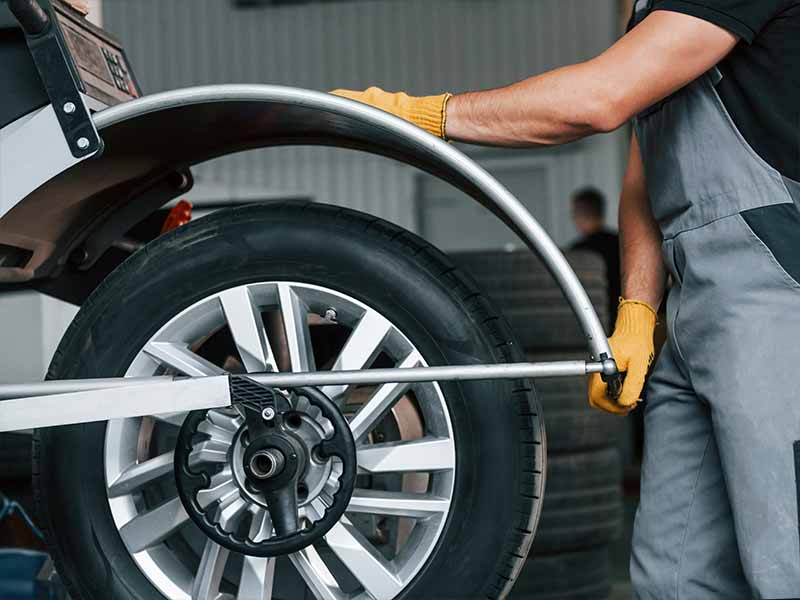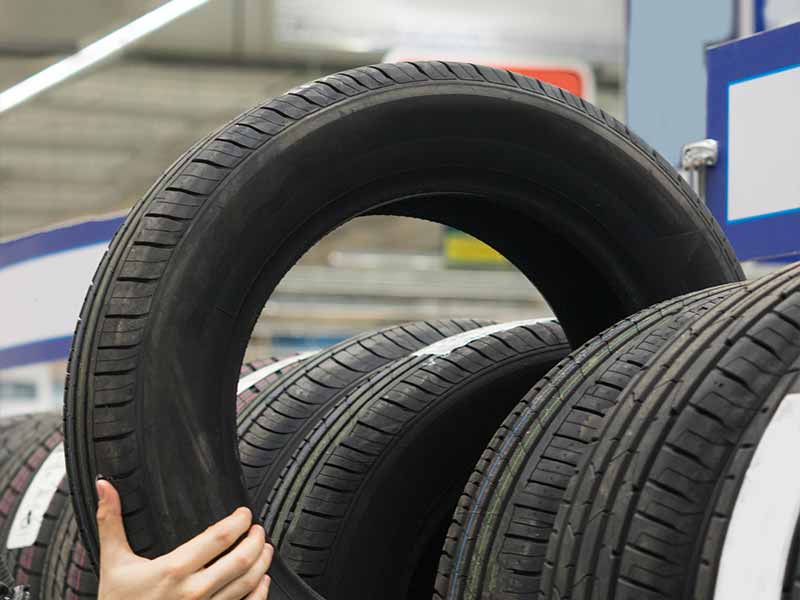You’re cruising down the highway when suddenly, thump! Flat tire. It’s something all drivers dread, but how much does it actually cost to replace a tire? If you’ve ever found yourself wondering about this, you’re not alone. Get ready to have your burning tire-related questions answered.
How Much Does It Cost To Replace A Tire?
The cost to replace a single tire can range from $50 to upwards of $500, depending on factors such as tire size, brand, and type.
When factoring in additional costs like installation, disposal fees, and potential roadside assistance, the total cost can increase significantly.
In this article, we’ll delve into the world of tires, demystifying the costs associated with buying and replacing them. We’ll discuss how the price can vary based on various factors, why it’s sometimes necessary to replace all four tires, and even tips on how to save money on your next tire purchase.
Let’s take a closer look.

The Cost Of A Single Tire
When it comes to tires, shopping can be as unique as a road trip adventure. From high-performance sports car tires to durable truck tires, the price tag can change quite a bit. So let’s break it down, focusing on the cost of a single tire.
How Much Does One Tire Cost?
The cost of one tire can vary significantly, usually ranging from around $50 to upwards of $500. Sounds like a wide range, right? It depends on a few factors such as:
- Tire Size: As we’ve talked about, bigger tires or tires for larger wheels cost more.
- Brand: Some tire manufacturers are like the luxury cars of the tire world. You’ll pay more for these brands, but they often offer better performance, durability, and warranties.
- Type: Specialty tires like winter tires or high-performance tires usually come with a heftier price tag.
Can You Just Replace One Tire?
Replacing only one tire can be done in certain situations. If the other tires are relatively new and the same brand and model as the one you’re replacing, you’re good to go. But if the other tires are worn down, it’s generally better to replace them all at once. It helps keep the wear even and your vehicle handling predictably.
Looking For A Bargain: Cheap Tires
Who doesn’t love a good deal? There are indeed cheap or inexpensive tires out there, and sometimes they might be the right choice. However, remember that tires are a critical part of your car’s safety. Lower-priced tires might not last as long, grip as well, or provide a comfortable ride. Sometimes, paying a bit more upfront can save you money — and headaches — down the road.

Cost Factors In Tire Replacement
So, you’ve picked out your perfect tire. You’re ready to whip out the credit card, but hold on a minute! The cost of the tire itself is only part of the story. There’s more to consider in the overall cost of tire replacement. Let’s dive into it!
Tire Installation
Installing a tire isn’t as simple as popping a fresh piece of bubble gum in your mouth. It’s a bit more complicated and usually involves:
- Removing the old tire from your wheel
- Mounting the new tire onto the wheel
- Balancing the new tire and wheel combo
- Installing the tire and wheel back onto your car
This process is generally performed by professionals at a tire shop. It requires special equipment and expertise, so it’s not typically a DIY job. Labor costs for tire installation can range from $15 to $45 per tire, depending on where you live and which shop you go to.
Additional Costs To Consider
Remember those hidden costs we mentioned? Well, here they are:
- Tire Disposal Fees: Your old tires can’t just be tossed in the trash. They need to be disposed of properly, and that comes with a small fee, usually between $2 and $10 per tire.
- Wheel Alignment: After getting new tires, it’s often a good idea to get your wheels aligned. This ensures that your tires wear evenly and your car drives straight. Expect to shell out around $50 to $100 for this service.
- TPMS Sensors: If your car has a Tire Pressure Monitoring System (TPMS), you might need to replace the sensors or reset the system when you get new tires. This can add an extra $50 to $200 to your bill.
- Road Hazard Warranty: Some shops offer an additional warranty that covers damage to your tires from things like potholes or nails. This can cost between $10 and $20 per tire, but could save you from needing to replace a brand-new tire that gets damaged.
Larger Wheels And Median Price
You’ve got style, and you want your car to show it! If you’re rocking larger wheels, keep in mind that larger tires generally cost more. The median price for a standard passenger car tire is about $100, but for light trucks or larger wheels, it can jump to $150 or more.

Buying And Replacing A Full Set Of Tires
Rolling on a new set of tires feels great, doesn’t it? Like getting a brand-new pair of shoes, but for your car! But how much will that set you back? And why would you want to replace all four tires at once? Let’s go over it.
How Much Do New Tires Cost For A Set?
To calculate the cost of four tires, you might think it’s as simple as multiplying the price of one tire by four. But remember those additional costs we talked about? They can add up when you’re replacing a full set. Here’s an example:
- Tire Cost: If we take the median price of a standard passenger car tire as $100, for four tires it’ll be around $400.
- Installation: Assuming an average installation cost of $25 per tire, for four tires it’s another $100.
- Disposal Fee: If your shop charges $3 per tire to dispose of the old ones, that’s an extra $12.
- Wheel Alignment: Let’s say that costs around $75.
- TPMS Reset: That might add another $50 to the total.
- Road Hazard Warranty: If you opt for this, at $15 per tire, that’s an additional $60.
Add it all up, and you’re looking at a total cost of about $697. Remember, these are just ballpark figures – the actual cost can vary depending on your car, your location, and the tire shop.
Why Replace All Four Tires?
If you’re thinking, “Wait a minute, I don’t want to shell out all that cash at once!”, it’s understandable. But there are some good reasons to replace all four tires at the same time:
- Even Wear: When all your tires are the same age and wear down together, it helps keep your car handling well. Imagine wearing one old shoe and one new shoe – it wouldn’t be very comfortable, would it?
- Savings: Sometimes, tire shops offer discounts when you buy a set of four tires. It’s their way of saying “thanks” for buying in bulk. Plus, you only have to make one trip, saving you time and gas money.

Additional Costs: Roadside Assistance and Unexpected Expenses
Now you’re practically a tire expert, but there are a couple more things to consider when it comes to the cost of replacing your tires. What happens if you get a flat tire on the road? And what about unexpected costs? Don’t worry, we’ve got you covered.
The Cost of a Roadside Tire Change
Imagine you’re on a road trip, singing along to your favorite tunes, when suddenly – thump, thump, thump. You’ve got a flat tire. Now what?
If you have a spare tire and know how to change it, you can do it yourself for free. But if you’re not comfortable changing a tire, or if you don’t have a spare, you’ll need roadside assistance.
The cost for roadside assistance can vary. If you have a membership with a roadside assistance provider like AAA, the service might be included in your membership. Without such a membership, expect to pay between $50 and $200 for a professional to come out and change the tire for you.
Remember, this is just to install the spare. You’ll still need to get the flat tire repaired or replaced.
Unexpected Expenses
Even when you think you’ve thought of everything, unexpected expenses can pop up. Here are a few that might come your way:
- Tire Repairs: If you run over a nail or hit a pothole, you might need a tire repair. This can cost between $15 and $50, depending on the repair.
- New TPMS Sensors: If your Tire Pressure Monitoring System (TPMS) sensors fail or get damaged during installation, you might need new ones. That can add between $50 and $200 to your bill.
- Additional Maintenance: While your car’s up on the lift for tire replacement, your mechanic might find other issues, like worn-out brake pads or a leaky exhaust. These additional repairs would add to your total cost.
Resources
Below are some links you may find helpful when learning about tires
Final Thoughts
The cost to replace a tire isn’t as simple as just the sticker price on a new tire. Installation, disposal fees, wheel alignment, TPMS sensors, and other additional costs can all add to the total. The costs can increase if you need roadside assistance or encounter unexpected expenses like tire repairs or additional maintenance.
However, you’re not at the mercy of these costs. By shopping around, looking for sales and rebates, maintaining your tires regularly, and choosing the right tire for your needs, you can potentially save money.
So, next time you hear that dreaded thump of a flat tire, you’ll know exactly what to expect and how to navigate your way through the tire replacement process.
Good luck and happy motoring.




